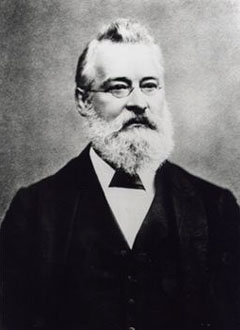The first one was William Odling.
 |
| William Odling |
Odling seperated the 52 discovered elements into 13 groups based on their physical and chemical properties.
But new discoveries were being made and from 1863-1866, John Newlands stated that if hydrogen had a mass of 1, then every 8th element had common properties, which was named "the Law of Octaves".
 |
| John Newlands |
But this was not the end of the periodic table. Our modern periodic table is based on the work of Dmitri Mendeleev, who arranged the elements by their masses and properties. He found that properties of elements recur periodically. So he split his table into periods and groups (or families). He made very accurate predictions on the undiscovered elements, which is why he left gaps in his table.
 |
| Dmitri Mendeleev |
 |
| Modern Periodic Table |
1) Alkali metals
2) Alkaline earth metals
3) Lanthanoids
4) Actinoids
5) Noble gases
6) Other non-metals and
7) Poor metals
As you will notice, hydrogen is in its in group. This is because hydrogen behaves unlike any other element, although it has characteristics of groups 1 and 17.
There are other ways of displaying the periodic table, like this:
 |
| Circular Periodic Table If you click here, you'll find some more useful information on the background of the periodic table. |














